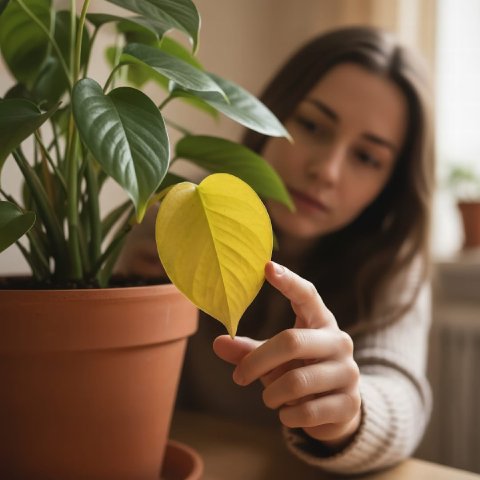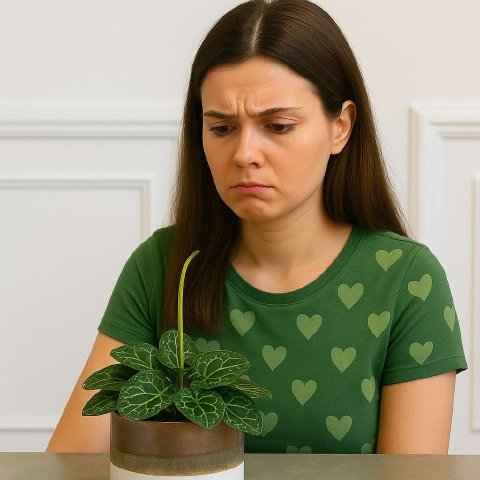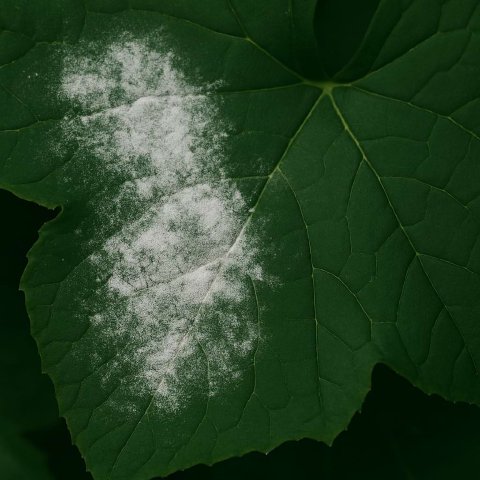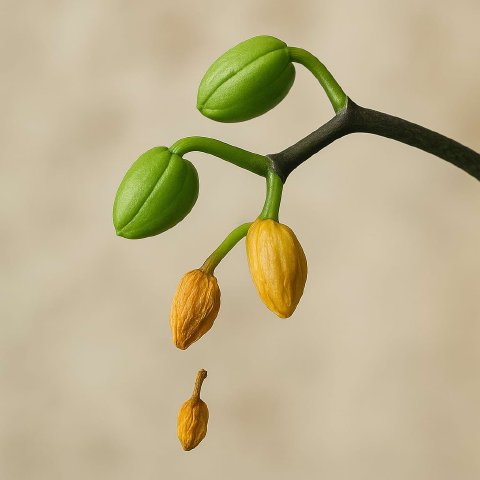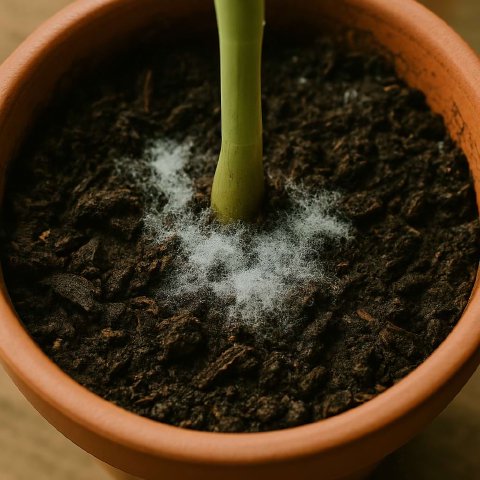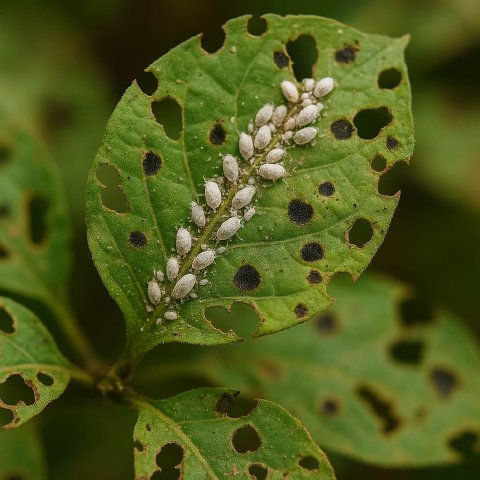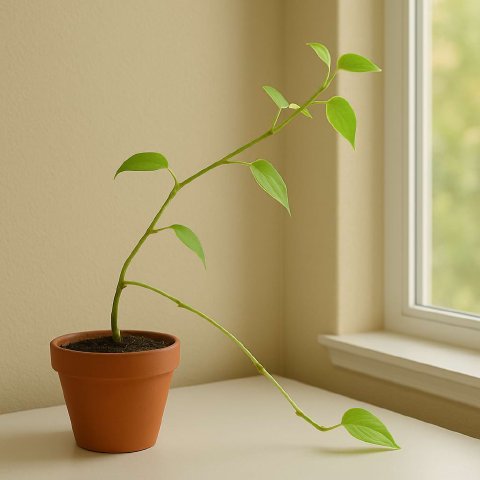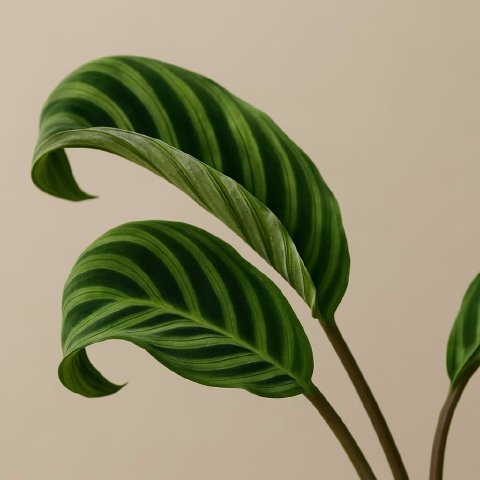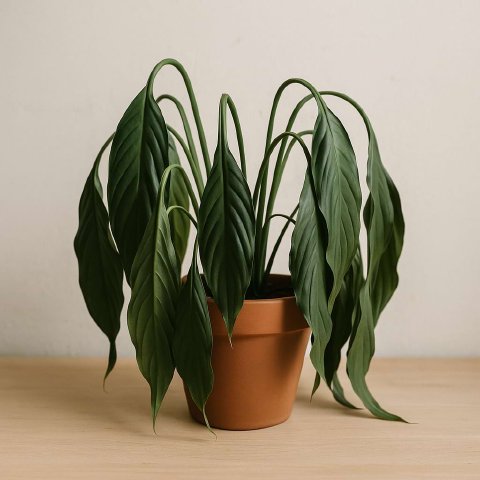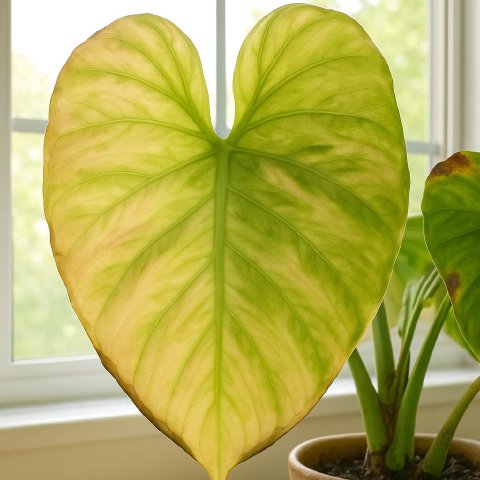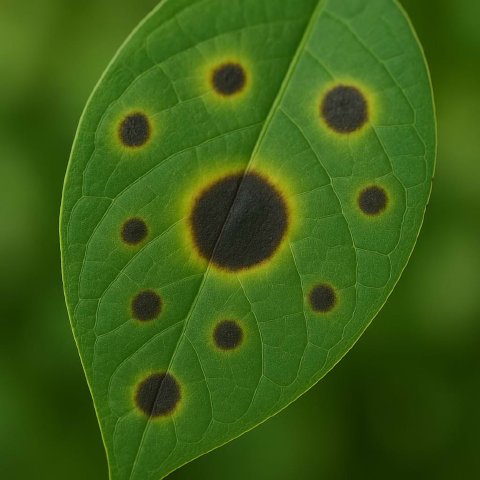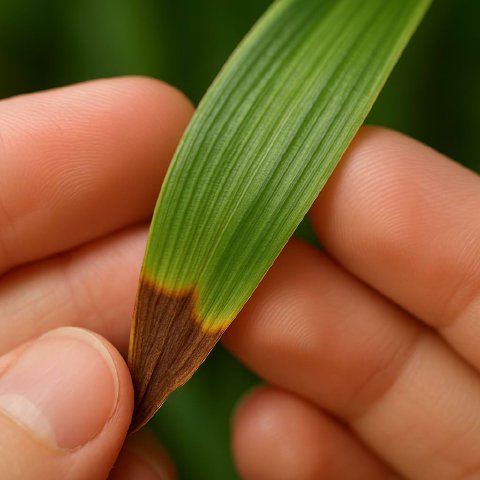🪴 In This Guide 🪴
🎯 Leaves Dropping? Let's Diagnose the Problem
Quick Diagnostic Chart
Hello, plant lovers! Anastasia here. Watching your plant’s precious leaves fall to the floor is heartbreaking. Leaf drop is a plant’s most drastic response to stress. It’s basically deciding to “abandon ship” on a part of itself to conserve energy for survival.
But not all leaf drop is a five-alarm fire. Sometimes it’s a normal process. The key is to look at which leaves are dropping and what else is happening with the plant.
| If you see… | And the dropped leaves are… | It’s likely… |
|---|---|---|
| Yellow, soft, dropping lower leaves | Wet or soggy soil | Overwatering (The #1 Culprit!) |
| Yellow, dry, crispy, dropping leaves | Bone-dry soil | Underwatering |
| A few of the oldest, bottom leaves yellowing and dropping one by one | Plant is otherwise healthy | Natural Aging (Normal!) |
| A sudden shower of leaves (can be green or yellow) | Plant was just moved or repotted | Acclimation or Transplant Shock |
| A sudden drop of leaves after a temperature change | Plant is near a window or vent | Temperature Stress (Cold Draft) |
🤔 Why Do Plants Drop Their Leaves?
An Act of Self-Preservation
A plant’s leaves are its power stations (photosynthesis) but also where it loses the most water (transpiration). When a plant is under severe stress-from lack of water, dying roots, or a sudden environmental shock-maintaining all of its leaves becomes an energy drain it can’t afford.
To save itself, the plant forms a special layer of cells called an “abscission layer” at the base of the leaf’s stem. This layer effectively cuts off the leaf from the plant’s systems, causing it to fall off. The plant is making a calculated decision to cut its losses and focus resources on its core survival.
🌿 Top 6 Causes of Leaf Drop and How to Fix Them
Cause #1: Overwatering
This is the most common reason for a plant to drop its lower leaves.
- Why it happens: Soggy soil leads to root rot. As the roots die, they can no longer support all the foliage, so the plant begins to shed its oldest, least efficient leaves (the ones at the bottom) to reduce its water needs.
- How to check: The soil is constantly wet. The dropping leaves are yellow and often feel soft or limp, not crispy. The base of the stem might be soft or dark.
- The Fix: Stop watering and let the soil dry out. Ensure the pot has drainage holes. If you suspect severe root rot, you’ll need to unpot the plant, trim the dead roots, and repot in fresh soil.
Cause #2: Underwatering
A thirsty plant will also shed leaves to survive.
- Why it happens: In a drought, a plant will sacrifice its leaves to conserve the little water it has for its vital stems and roots.
- How to check: The soil is bone-dry and hard. The pot feels very light. Dropping leaves are typically yellow, dry, and crispy.
- The Fix: Give the plant a deep and thorough watering. Bottom watering is great for rehydrating extremely dry soil. The leaf drop should stop once the plant is on a more consistent watering schedule.
Cause #3: Acclimation Shock
Plants are creatures of habit and hate moving.
- Why it happens: The environment in a greenhouse or nursery is perfect. When you bring a plant home, it’s suddenly in a completely different environment with lower light, humidity, and different temperatures. This shock can cause it to drop a significant number of leaves as it adjusts.
- How to check: The leaf drop started within a few weeks of you bringing the plant home or moving it to a new location in your house. It’s especially common in sensitive plants like the Fiddle Leaf Fig or its elegant cousin, the Ficus Audrey.
- The Fix: Be patient and provide consistency. Put the plant in its “forever home” (with appropriate light) and leave it there. Keep your care routine stable. The dropping should stop once the plant acclimates.
Cause #4: Temperature Stress
A sudden chill is a major shock.
- Why it happens: A blast of cold air from a drafty window, an open door, or an air conditioning vent can shock a tropical plant, causing it to drop leaves suddenly as a defense mechanism.
- How to check: The leaf drop was sudden and dramatic. The plant is located near a potential source of a draft. The dropped leaves might even be green and healthy-looking.
- The Fix: Move the plant to a location away from any drafts or sudden temperature fluctuations.
Cause #5: Natural Aging
Sometimes, it’s just the circle of life.
- Why it happens: It is completely normal for a plant to shed its oldest leaves as it grows. These are usually the lowest leaves on the stem. The plant is simply redirecting its energy to support new growth at the top.
- How to check: It’s only one or two leaves at the very bottom that turn yellow and drop off. Meanwhile, the rest of the plant is green, healthy, and actively producing new leaves.
- The Fix: Do nothing! This is a sign of a healthy, growing plant. Simply clear away the fallen leaves.
Cause #6: Pests or Disease
A severe infestation can overwhelm a plant.
- Why it happens: If a pest infestation (like spider mites or scale) becomes severe, it can drain so much energy from the plant that the plant begins to shed leaves it can no longer support.
- How to check: You will see other clear signs of pests-webbing, sticky residue, visible insects-or disease before the leaf drop becomes severe.
- The Fix: Address the specific pest or disease aggressively. Isolate the plant and treat it with an appropriate insecticide or fungicide.
🛡️ How to Prevent Leaf Drop in the Future
Best Practices for Leaf Retention
- Establish a Consistent Watering Routine: The vast majority of leaf drop issues are related to water. Master this, and you’ve solved most of your problems.
- Find a Good Spot and Stick With It: Plants don’t like to be moved. Find a location with the right light and try to keep your plant there.
- Provide a Stable Environment: Keep plants away from drafts, vents, and radiators to avoid temperature shock.
- Acclimate New Plants with Patience: Expect a little drama when you first bring a plant home. Provide good care and give it time to adjust.

